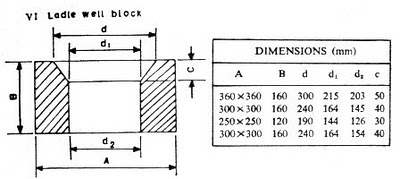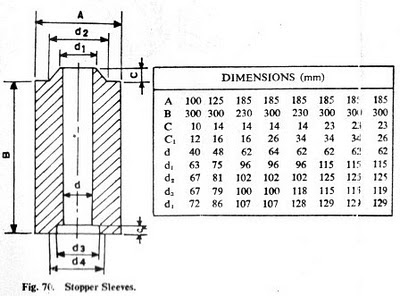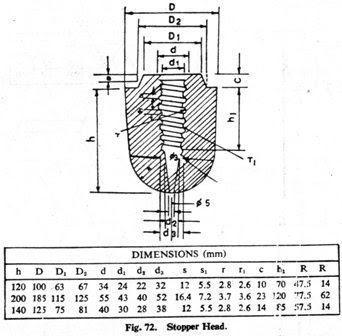19-Jan-2011
There is no limit to which a refractory brick can have different shapes and sizes to suit a particular design or lining requirement. Production of refractory shapes depends upon the design and size of furnaces or other service constructions where such refractories are to be used. Numerous shapes and sizes of refractory bricks are produced to meet the specific lining requirements of straight walled, cylindrical, arched, dome and other special types of construction work besides the shapes like wedges, keys, sleeves, nozzles, burner blocks, tiles etc. For example, only an iron blast furnace requires refractory bricks of so many types, shapes and sizes. However, most of the lining works are made of certain standard refractory shapes and sizes which are always available in the market. Special refractory shapes are only produced to meet the specific lining requirements of each furnace or refractory structures like some typical coke oven shapes, stopper heads, arch tiles etc. The shapes which are universally accepted and used are listed below (see figure):
There is no limit to which a refractory brick can have different shapes and sizes to suit a particular design or lining requirement. Production of refractory shapes depends upon the design and size of furnaces or other service constructions where such refractories are to be used. Numerous shapes and sizes of refractory bricks are produced to meet the specific lining requirements of straight walled, cylindrical, arched, dome and other special types of construction work besides the shapes like wedges, keys, sleeves, nozzles, burner blocks, tiles etc. For example, only an iron blast furnace requires refractory bricks of so many types, shapes and sizes. However, most of the lining works are made of certain standard refractory shapes and sizes which are always available in the market. Special refractory shapes are only produced to meet the specific lining requirements of each furnace or refractory structures like some typical coke oven shapes, stopper heads, arch tiles etc. The shapes which are universally accepted and used are listed below (see figure):
Fig: Refractory Shapes
Standard Refractory Shapes
1. Straight (Rectangular)
2. Side Arch
3. End Arch
4. Wedge
5. Key
6. Flat Circle
7. Combined Arch and Wedge
8. Circle
9. Splits
10. Dome Brick
11. Skew (End / Side)
12. Bullnose or Jamb Brick
13. Soap or Closer
Fig: Refractory Brick Shapes / Sizes
Fig: Ladle Well Block
Fig: Stopper Sleeve
Fig: Stopper Pin
Fig: Stopper Head
(For a short definition of each shape see the Refractories Terms and Definitions (Glossaries) in the menu navigation bar above)
Standardization and rationalization of refractory shapes becomes important as a host of refractory shapes needed for lining even a single part of a production unit involving very complex and complicated designs necessitates use of numerous kinds of opening and aperture details besides inter-chamber dimensions et. As such one can not imagine preparation of moulds either by mechanical pressing or by hand / pneumatic moulding to suit production of large number of shapes with different design details without involving a very high cost of production. So, it is always preferable to design a lining with commonly used refractory shapes as they facilitate easy availability, reduce cost (moulds / liners are generally available with manufacturer), and easy to repair.














0 on: "Refractory Bricks – Shapes and Sizes"